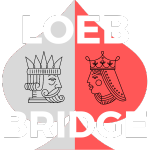Playing 2/1 Game Force, responder's bid of a new suit at the 2-level is forcing to game. When responder lacks the strength to force to game, responder will often have to bid 1NT. In Standard American, a 1NT response shows 6-10 points. Playing 2/1 Game Force, this range is expanded to include invitational hands. To warn your opponents that responder's 1NT bid may be stronger than expected, opener is required to announce responder's 1NT bid as "Forcing" or "Semi-Forcing."
The key difference between 1NT Forcing and 1NT Semi-Forcing is whether opener can pass a 1NT response. Playing 1NT Semi-Forcing, opener is expected to pass a 1NT response with a balanced hand which would not accept a limit raise. Playing 1NT Forcing, opener cannot pass a 1NT response. So opener would need to manufacture a bid with a balanced hand that isn't strong enough to rebid 2NT.
Here is an analysis of the pros and cons of 1NT Forcing and 1NT Semi-Forcing to help 2/1 Game Force players choose what is best for their partnership.
1NT Forcing Pros:
- Responder can always show a 3-card limit raise
- It is common to play a direct limit raise like 1♥ - Pass - 3♥ shows 11-12 points and 4+ hearts
- A delayed limit raise, e.g. 1♥ - Pass - 1NT - Pass; 2♣ - Pass - 3♥ shows 11-12 points and 3 hearts
- Since 1NT is forcing, responder can always show their 3-card limit raise
- If playing Constructive Raises, responder with a weak raise can bid 1NT, knowing they will have the opportunity to raise opener's major
- Constructive raise: 1♥ - Pass - 2♥ shows 8 - 10 Support Points
- A weak raise or a preference: 1♥ - Pass- 1NT - Pass; 2♣ - Pass - 2♥
- Responder can always show a weak hand with a long suit
- A hand like ♠9 ♥Q9 ♦QJ98542 ♣J73, doesn’t have much value if not playing in diamonds
Responder can bid 1NT knowing they will have the opportunity to bid diamonds
- A hand like ♠9 ♥Q9 ♦QJ98542 ♣J73, doesn’t have much value if not playing in diamonds
1NT Forcing Cons:
- Cannot play 1NT which is often the best available contract
- Responder doesn’t know whether opener’s rebid is natural
- Auctions like 1♥ - 1NT - 2♦ have a wide range: 12-18 points
- Adding ambiguity about opener's distribution to this wide point range makes accurate bidding difficult
- Playing 1NT Forcing makes this auction more difficult
- Responder is often forced to guess
- After 1♠ - Pass - 1NT Forcing - Pass; 2♣ - Pass
what should responder bid with ♠9 ♥A9842 ♦K95 ♣K873- If opener has, ♠KQ854 ♥A42 ♦K9 ♣J73, you want to be in hearts
- If opener has ♠KQ854 ♥42 ♦K94 ♣AJ73, you want to be in clubs
- Opener rebids 2♣ with both hands
- After 1♠ - Pass - 1NT Forcing - Pass; 2♣ - Pass
1NT Semi-Forcing Pros:
- Allows you to play 1NT
- A non-vulnerable 1NT tends to score well whether it makes or not
- Opener’s rebids are natural
- Less guessing for responder
- More accurate bidding
- A 14-16 1NT range is recommended with 1NT Semi-Forcing to avoid opener having to manufacture a bid with a 14 point balanced hand
1NT Semi-Forcing Cons:
- You may play 1NT when responder has a 3-card limit raise
- Not necessarily a bad thing
- Sometimes 3♠ (or 3♥) is going down
- Sometimes the same tricks are available in notrump
- You may play 1NT when responder has a weak hand with a long suit
- A hand like ♠9 ♥Q9 ♦QJ98542 ♣J73 has more value in diamonds than notrump
Recommendation:
Opener has a wide point range in an auction like 1♠ - Pass - 1NT - Pass; 2♣
If playing 1NT Forcing, you cannot depend on opener have a real club suit. Adding ambiguity to an auction where opener has a wide point range makes accurate bidding difficult. 1NT Semi-Forcing is recommended because opener's rebids show a real suit, providing a better foundation to find the right contract. Playing 1NT Semi-Forcing risks playing n 1NT when responder has a limit raise which would be declined by opener. This can be costly when more tricks are available in opener's major. However, 1NT contracts will score better when notrump wins the same number of tricks and when 3 of opener's major goes down while 1NT is making. Additionally, 1NT Semi-Forcing allows you to play 1NT which is often the best available contract. See the "Race to 1NT" article by Andrew Gumperz for a discussion.
To get the most out of 1NT Semi-Forcing, you want ensure opener's rebids can be trusted. If your 1NT opening bid shows a 15-17 HCP hand, opener may need to manufacture a rebid with a `4 HCP hand like ♠A8754 ♥K42 ♦K9 ♣A73. Opener would begin with 1♠. If responder bids 1NT Semi-Forcing, opener cannot pass 1NT because they would bid game over an invitational raise. So opener would need to manufacture a rebid on their 3-card club suit. This can be avoid by using a 14-16 HCP range for your 1NT opening bid. Since you don't want to rebid 2NT with some 17 HCP hands, it is wise to make your 1NT range 14 to a bad 17 HCP.




